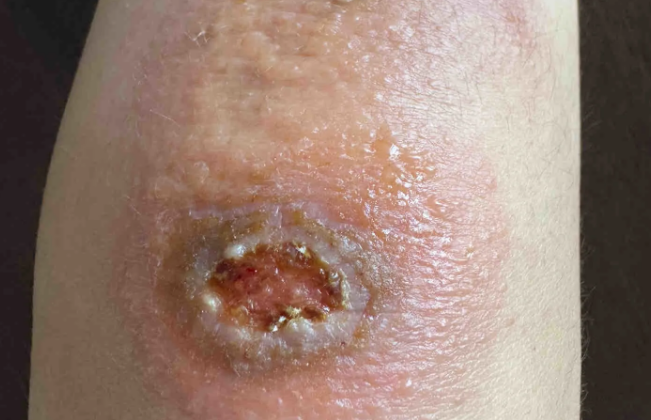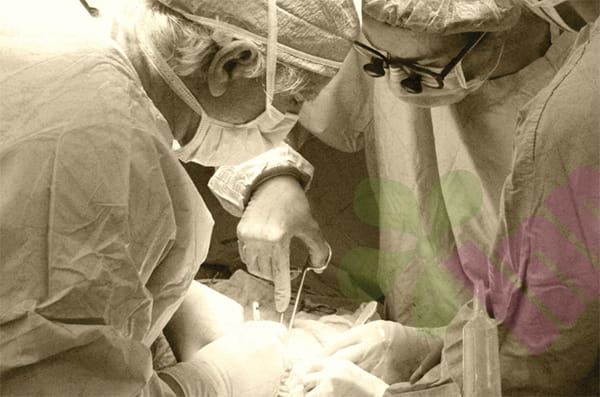Chronic, difficult-to-heal wounds (ulcers) on the body surface refer to injuries on the body surface that have not shown signs of healing after more than one month of standardized treatment. The formation mechanism involves multiple pathological and physiological processes. This type of wound is common in diabetic foot, severe traumatic sequelae, varicose vein complications, arteriosclerosis obliterans, and long-term bedridden patients. It has the characteristics of complex etiology, long treatment cycle, and heavy medical burden, and has become an important challenge in the field of global public health.

Classification of chronic wounds :
- Vascular ulcer
Venous ulcers account for 60%-70% of chronic wounds and are typically manifested as ulcers on the inner side of the lower leg, often secondary to varicose veins. Venous valve insufficiency leads to venous hypertension, increased capillary permeability, and red blood cell extravasation, leading to iron deposition, forming characteristic "lipid sclerosis" changes.
Arterial ulcers: mostly caused by arteriosclerosis obliterans, with a stocking-like distribution. Early symptoms include intermittent claudication, rest pain as the disease progresses, and eventually lead to ischemic gangrene.
Mixed ulcer: It has characteristics of both venous and arterial lesions, and treatment needs to take into account both hemodynamic improvement and infection control.
- Special types of ulcers
Diabetic ulcer: Under the condition of hyperglycemia, peripheral neuropathy and vascular disease work synergistically to form the "three highs" characteristics (high incidence, high amputation rate, and high recurrence rate).
Pressure injury: It often occurs in bony protrusions such as the sacrum and heels, and the pressure shear force leads to tissue ischemia and necrosis.
Cancerous ulcers: common in basal cell carcinoma and squamous cell carcinoma, manifested as erosive growth with a foul odor, requiring pathological biopsy for diagnosis.
Wounds become difficult to heal?
Whole body nutrient metabolism
Protein energy malnutrition leads to reduced collagen synthesis and decreased wound tensile strength. Zinc deficiency inhibits DNA synthesis, and iron deficiency affects oxygen transport, both of which delay the healing process. Telomere shortening in the elderly leads to decreased cell proliferation, immune aging weakens the phagocytic function of macrophages, and a chronic low-grade inflammatory state persists.
Microenvironmental Disturbance Theory
Diabetic wounds present (high blood sugar, high osmotic pressure, high oxidative stress; low growth factors, low cell activity, low angiogenesis).
The adipose tissue in obesity wounds secretes inflammatory factors, forming a chronic inflammatory microenvironment and inhibiting the function of fibroblasts.
Temperature regulation mechanism
Maintaining the local temperature of the wound at 30℃-32℃ can optimize enzyme activity and promote cell migration. Low temperature causes vasoconstriction, and high temperature increases metabolic oxygen consumption, both of which are not conducive to healing.
How to care for difficult-to-heal wounds?
Management of venous leg ulcers :
Patients should avoid standing or sitting for long periods of time, avoid smoking and drinking, avoid greasy and spicy foods, exercise their leg muscle groups, and promote venous blood return in the lower limbs. Elastic stockings or elastic bandages can be used for treatment under the guidance of a specialist.
Lower limb arterial ulcers:
Patients should avoid smoking, drinking, greasy, spicy, and stimulating food. The affected limb should be kept warm to avoid excessive cold or heat stimulation. At the same time, regular leg muscle exercises are appropriate to facilitate the formation of collateral circulation.
Diabetes combined with wounds:
Actively control blood sugar, exercise moderately every day, avoid using electric blankets, hot water bottles, or infrared spectrometers, wear light-colored socks, do not walk barefoot, observe the condition of your feet every day, and seek medical attention in time if skin allergies, damage, or infection occur.
Pressure injuries:
Patients should move as much as possible according to their condition. Those who cannot get out of bed should turn over at least once every two hours by themselves or with the help of their family members, use pressure relief devices appropriately, and at the same time strengthen nutrition, eat a reasonable diet, and supplement with rich protein, sufficient calories, vitamin C, vitamin A, and minerals.
Wound prevention is better than a cure. For more information on Innomed®Silver Ion Dressing Foam, refer to the Previous Articles. If you have customized needs, you are welcome to contact us.
Editor: kiki Jia

 English
English عربى
عربى Español
Español русский
русский 中文简体
中文简体








